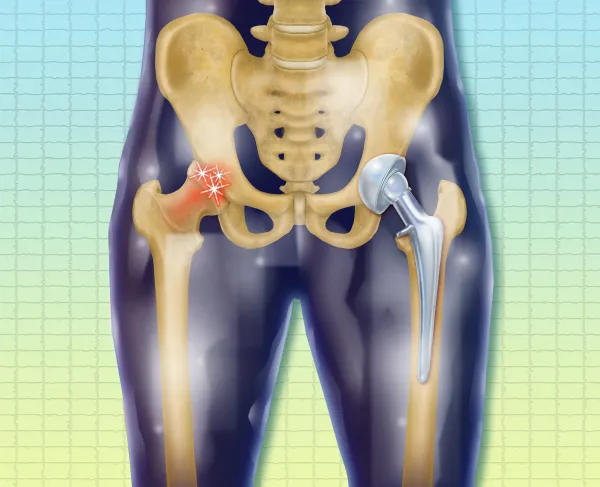Part B Insider (Multispecialty) Coding Alert
Ensure Painless Reporting of Hammertoe, Tenotomy Together With This Guide

Hammertoe surgery is one of the most often-performed procedures by podiatrists. Although flexor tenotomy cases with hammertoe correction together are rare, but it is still possible to get such a case. However, reporting the two procedures together is tricky and may rebound. Answer these questions to navigate the deep waters of tenotomy plus hammertoe correction coding.
How Do You Report Hammer Toes?
Physicians use the term “hammer toe” (reported with ICD-10 code M20.4-, Other hammer toe[s] [acquired]) to describe a variety of lesser toe (toes two-five) deformities. From October onward, you will report ICD-10 code Hammertoes are of two kinds:
Flexible hammertoes can be diagnosed and treated while still in the developmental stage, so podiatrists consider it less serious. Not to mention, flexible hammertoes are still moveable at the joint.
On the other hand, rigid hammertoes are more serious, and can occur in patients with severe arthritis. In this type, the tendons have become tight and the joint misaligned and immobile. The only possible way to treat patients with rigid hammertoes is through surgery. The cartilage on the base of the middle phalanx is roughened up to promote arthrofibrosis, and the complex is then straightened and fixed with a K-wire. “Most times the head of the proximal phalynx is removed,” says Arnold Beresh, DPM, CPC, of Peninsula Foot and Ankle Specialists PLC in Hampton, Va. “The toe is not always fused with a K-wire. There are now many different implants to be used between the proximal and middle phalynx,” he adds.
When your podiatrist performs a hammertoe correction — flexible or rigid — you can report the procedure with code 28285 (Correction, hammertoe [e.g., interphalangeal fusion, partial or total phalangectomy]). Podiatrists occasionally may also perform flexor tenotomy on the same or other toe and report 28232 (Tenotomy, open, tendon flexor; toe, single tendon [separate procedure]).
Have You Checked Tenotomy Inclusions in 28285?
Since physicians don’t always perform a tenotomy with hammertoe corrections, you may be inclined to report the tenotomy separately from their hammertoe code. Although The American Academy of Orthopaedic Surgeons (AAOS) Complete Global Service Data for Orthopaedic Surgery doesn’t list 28232 as a component of the hammertoe correction, and the National Correct Coding Initiative (CCI) doesn’t bundle the codes together. In reality, correcting a hammertoe clinically includes the flexor tenotomy. Tenotomizing the flexor tendon at the interphalangeal joint to correct a hammertoe contracture is included in the hammertoe correction procedure.
However, if you look closely at the CCI edits, only 28234 (Tenotomy, open, extensor, foot or toe, each tendon) is listed as bundled into the procedure, not 28232. The flexor tenotomy procedure may be billed separately if a separate incision is used. Similarly, there may be a window of coding opportunity as the flexor tendons are located on the plantar side of the foot. If performed open (28232) or percutaneously (28010, Tenotomy, percutaneous, toe; single tendon), the physician may perform them through a separate incision or at a different level (DIP vs. PIP), allowing for separate reporting. Remember, you have to have supporting documentation.
Interpretation challenge: You may face payer rebound for flexor tenotomy claims as some payers may just refuse to accept the flexor tenotomy as separate. Most practices shy away from reporting 28285 and 28232 together on the same toe, as the American Orthopaedic Foot and Ankle Society (AOFAS) states the work performed doing the tenotomy is included in 28285, either extensor or flexor. Therefore, checking your local payer guidelines is a must before reporting this combo.
What is included: Incision of bone (the arthroplasty), tenotomy, tendon transfer, capsulotomy, any fusion or fixation, fixation with K-wire, all correction of soft tissue, incision, excision, and insertion of implants.
Not included: “Procedure 28270 (Capsulotomy; metatarsophalangeal joint, with or without tenorrhaphy, each joint [separate procedure]) when done at the metatarsophalangeal joint (MPJ) is not included in the procedure of 28285,” Beresh cautions.
Which Modifiers Can Be Your Saviors?
Two hammertoes: You might need modifiers to help differentiate work on different areas of the feet or toes, however. You have to use them judiciously as a payer may well disallow the use of the toe modifiers, which run sequentially from TA (Left foot, great toe) and T1 (Left foot, second digit) to T9 (Right foot, fifth digit). You can adopt these T modifiers for Medicare and for those payers who follow Medicare, and in some cases, the T modifiers alone should be sufficient. You should report a separate code for each digit in your claim, if your surgeon performs hammertoe corrections on several toes. For example, for hammertoe corrections in third and fourth toes of the left foot, you will report 28285-T2 (… Left foot, third digit) and 28285-T3 (… Left foot, fourth digit).
Hammertoe plus tenotomy: Even if your podiatrist is doing a tenotomy on one toe and the hammertoe correction on another, you can use T modifiers to identify the two procedures separately. For example, if the podiatrist performs a hammertoe correction on the left second toe and only an open flexor tenotomy on the left third toe, you can report 28285-T2 for the hammertoe and 28232-T3 for the flexor tenotomy. Use of the T modifiers would alert the payer as to the separate nature of the procedures. There are however payers who either do not recognize the T modifiers.
To resolve this conundrum, you may turn to modifier 59 (Distinct procedural service) and append the modifier to 28232 when reporting it with 28285 with the appropriate documentation. Not all carriers will reimburse for this procedure, so check with your carrier. According to some experts, if surgical correction is needed as described in code 28285, and your physician needs to perform a 28232, you should add modifier 59 to this procedure — unless your physician stated it was an integral part of the procedure.
Again, payers may deny the bundled code even when the appropriate location identifying modifier is appended showing that the procedures were performed at different anatomic sites. You should check payer guidelines to see if they require modifier 59 on code 28232 in this scenario or both the 59 and the T modifiers.
Caution: Payers differ in how they view reporting of hammertoe corrections in two toes. Reporting 28285 on multiple toes sometimes will be trial and error, as different carriers have different modifier assignments. Start out by sounding out your individual payer for its specific guidelines regarding the use of modifiers for scenarios that include multiple toes as guidelines vary among local third party payers. In addition to the HCPCS Level II T modifiers to indicate which toes were operated on, you may need to use modifiers 50 (Bilateral procedures), 51 (Multiple procedures), 58 (Staged or related procedure or service by the same physician or Other Qualified Health Care Professional during the postoperative period), 78 (Unplanned return to the operating/procedure room by the same physician or other qualified health care professional following initial procedure for a related procedure during the postoperative period), or 79 (Unrelated procedure or service by the same physician during or Other Qualified Health Care Professional the postoperative period).
Regardless of which modifiers are used, ensure that you submit an operative report as well, due to the many procedures performed and to prevent confusion on the part of the payer (and a subsequent denial).
Related Articles
Part B Insider (Multispecialty) Coding Alert
- CPT® 2016:
Get to Know Two New Prolonged Services Codes You Can Use Next Year
You’ll now be able to report more than just physician time. ‘Tis the season — [...] - CPT®2016:
Here's Your Sneak Peek at Otolaryngology Coding Changes That Take Effect in January
Don’t miss the latest update to cerumen removal. September brings football season, the colors of [...] - Reader Question:
Use Appropriate Policy to Justify Modifier 59 Usage
Question: I have a Medicare patient that keeps coming back to see the doctor for [...] - Reader Question:
Differentiate Biopsy From Other Services
Question: Our physician routinely performs biopsies along with other procedures. How do I know when [...] - Part B Coding Coach:
Ensure Painless Reporting of Hammertoe, Tenotomy Together With This Guide
Choosing the right combo of modifiers is as crucial as the right code. Hammertoe surgery [...] - Physician Notes:
CMS: Using Our Free Billing Software Doesn't Excuse You From ICD-10
If your claim submission software is preventing you from submitting ICD-10 codes on your claims, [...] - In other news...
If you thought the government went after medical practitioners for fraud, think again. On Sept. [...]




